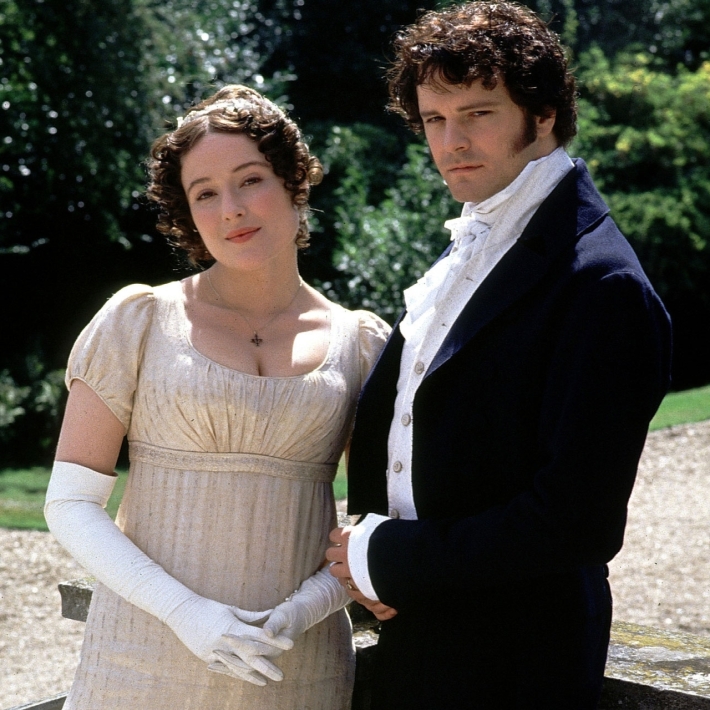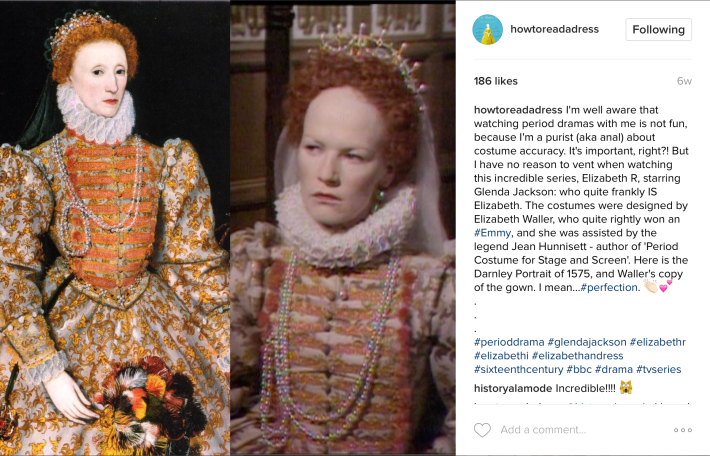“Since I was four years old and wanted to be a ‘knight in shining armour’ (definitely not a damsel in distress), dress history has been present in my life.” –Lydia Edwards

I have said it before and I will say it again: clothing speaks, or as haute couturier Paul Poiret pointed out, they sing: “A garment is like a good portrait–the expression of a spiritual state,” he told Vogue in 1909, “and there are robes [dresses] that sing the joy of living as others that herald tragic ends.” Thus, is the power of clothing: to speak volumes without having to say a word. A person just needs to know how to “listen,” or as fashion historian Lydia Edwards points out in her new book, how to read. In How to Read a Dress: a Guide to Changing Fashion from the 16th to the 20th Century, Edwards takes readers on a four hundred year “sartorial journey through women’s fashion.” Covering an impressive time span, 1550-1970, Edwards’ image-driven commentary and analysis teaches her audience quiet literally, how to read a dress. She seamlessly incorporates quotes and images from contemporary sources to underscore her analysis of each dress, emphasizing the important structural and decorative shifts that contributed to its evolution over hundreds of years. Especially exciting: many of the dresses featured in the book are being photographed and published for the first time! Edwards book is not only informative and beautiful, it is inexpensive!!, and can be found on Amazon here. I am thrilled to feature Edwards as the latest participant in Fashion History Talks!

Tell us about yourself and what you do as it relates to the history of fashion and dress. My current teaching is not fashion history-based, although I have taught art history and broader humanities programs in the past which did feature dress and material culture. I was also fortunate enough to develop and teach a continuing education class at the University of Dundee, Scotland, which focused entirely on the evolution of fashion and defining moments in men and women’s dress.
My art, fashion and theatre history PhD focused on the ‘historical escapism’ of late nineteenth-century theatrical costumes, and this transdisciplinary approach has remained with me: just as well, since I feel that knowledge across disciplines is vital when it comes to dress history. My fashion-related work at the moment sits within my own personal research, so in that sense I am an independent researcher in dress history, specializing in women’s fashion. I have been invited to contribute several public talks in connection with fashion exhibitions and collections in Australia, something which enabled me to gauge the interest of the public and assess the need for a publication which became How to Read a Dress.

Why is the study of fashion and dress history important to you? Since I was four years old and wanted to be a ‘knight in shining armour’ (definitely not a damsel in distress), dress history has been present in my life. At that age I would draw hundreds of pictures of pieces of armour, sort of like a flat lay, and knew all about the different kinds of breastplates and helmets (information I have subsequently forgotten!). My next interest was ballet – almost exclusively for the clothes and shoes—and then the BBC’s Pride and Prejudice came out in 1995, when I was 11. Something clicked and all I wanted to do was wear empire-line dresses and bonnets. From then on it became an all-encompassing passion and I went from wanting to be a costume designer (particularly after meeting the late, great costume and set designer John Elvery) to becoming – by way of art and theatre history— what I am today, a fashion historian. The history of dress has therefore been with me in one way or another my whole life, and my interest has only grown as I’ve got older. I’m never bored when researching, talking about, looking at historic dress and enjoying the fact that there is always something new to learn. My passion is now to make dress history accessible and enjoyable for everyone, no matter their level of knowledge or expertise. This is how How to Read a Dress came about.

In your opinion, is fashion art? I’ve thought about this and talked about it with students so much, and to be honest I’m still on the fence. Philosophically, I suppose it comes down to the raw question of what ‘art’ is at all…and I won’t even attempt to answer that here. To me, fashion is beauty; and I seem to be able to find beauty even in the most unconventional and outrageous of fashions. As with architecture, fashion has a utilitarian root, but beyond its most basic functional premise it can still be driven aesthetically. So in essence, fashion needn’t be art: but it can be.

Favorite fashion designer, past and present: Past – Charles Frederick Worth. I’m fascinated by historicism within fashion, and his pieces are full to the brim with historical influences. These are integrated subtly within fiercely modern foundations, but they’re unmistakable. When I come across a Worth I haven’t seen before, it’s enough to take my breath away on first viewing. On that basis my favourite present fashion designer would probably have to be Vivienne Westwood, and – just for the sheer unabashed outrageousness of some of his creations – the wedding dress designer Ian Stuart. Wedding dresses are a particular interest of mine, having worked in a bridal shop as a student and made historically-themed or inspired bridal gowns for clients (and for myself!). They allow a touch of theatre, luxury, and opulence and historical styles can be appropriated in so many ways to allow that.
If you could recommend one fashion or dress history related book to Art of Dress followers, what would it be? Looking over my bookshelves, I could have given you such a long list! But if I were forced to choose just one, it would have to be Nancy Bradfield’s Costume in Detail, 1730 – 1930. Beautiful draughtsmanship is combined with impeccable scholarship to create a stunning insight to the construction of women’s clothes across three centuries. Anyone with even a passing interest in fashion can appreciate the gorgeousness of this volume, and it’s invaluable to anyone wanting to learn about the intricacies of dress.
 If you could recommend one movie for the period costumes alone, what would it be? Without a doubt, the BBC’s 1995 adaptation of Pride and Prejudice. There were flaws, certainly, but they were small! The designer Dinah Collin worked from original fashion plates and written sources, and her meticulous research into Regency life and style really showed in the resulting costumes. She wanted actors to view their clothes as just that – clothes, not costumes – and I think this mindset is evident in the way they wear them with ownership: they wear the clothes, not the other way around. If you watch the series alongside something less successful, I feel this achievement is particularly noticeable and admirable.
If you could recommend one movie for the period costumes alone, what would it be? Without a doubt, the BBC’s 1995 adaptation of Pride and Prejudice. There were flaws, certainly, but they were small! The designer Dinah Collin worked from original fashion plates and written sources, and her meticulous research into Regency life and style really showed in the resulting costumes. She wanted actors to view their clothes as just that – clothes, not costumes – and I think this mindset is evident in the way they wear them with ownership: they wear the clothes, not the other way around. If you watch the series alongside something less successful, I feel this achievement is particularly noticeable and admirable.
It’s cheating but I also have to mention the incredible Henry VIII and his Six Wives (1970), starring Keith Michell, and Elizabeth R (1971), starring Glenda Jackson. The costumes were designed by Elizabeth Waller (assisted by Jean Hunnisett) and were based jaw-droppingly closely on original portraits and written accounts. Quite simply, perfection.
Find more from Edwards on her fascinating Instagram @howtoreadadress



Love this aesthetic!! Reminds me of steam punk. I hope this look comes back, It’s been too long. Check out my blog where I post anything to do with fashion!
LikeLike
I love edwardian fashion!
LikeLike
The wonderful combination between old and new fashion. No one can imagine that of they see it together. Thanks for sharing
LikeLike
blockquote, div.yahoo_quoted { margin-left: 0 !important; border-left:1px #715FFA solid !important; padding-left:1ex !important; background-color:white !important; } Very interesting!!! Beautiful clothing!!
Sent from Yahoo Mail for iPhone
LikeLike